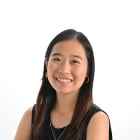Jane Goodall: Five things about the life and legacy of the world's chimpanzee expert
Jane Goodall, who was known for her groundbreaking research on chimpanzees, died at the age of 91.
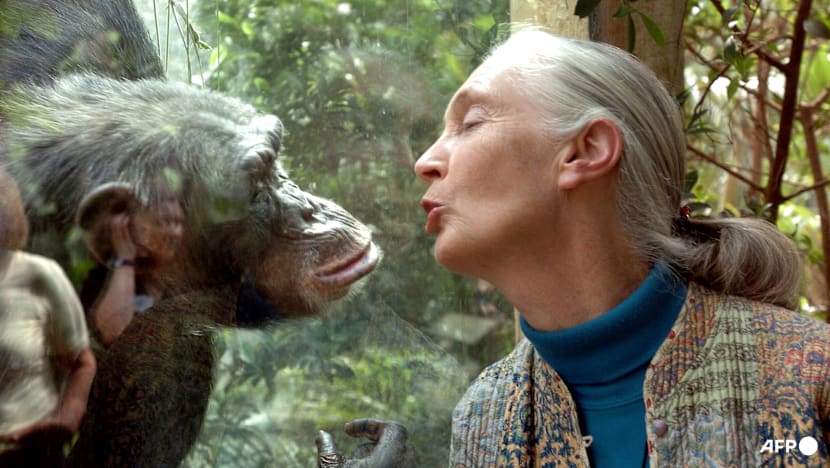
Jane Goodall, the world's foremost authority on chimpanzees, communicates with chimpanzee Nana on Jun 6, 2004, at the zoo of Magdeburg in eastern Germany. (File photo: DDP via AFP)
SINGAPORE: World leaders and environmental advocates paid tribute on Wednesday (Oct 1) to renowned British conservationist Jane Goodall after she died at the age of 91.
Goodall was known for her groundbreaking research on chimpanzees.
She became a household name through her appearances in documentaries and on television, as well as her travels to address packed auditoriums worldwide.
Here's what we know about her life and legacy.
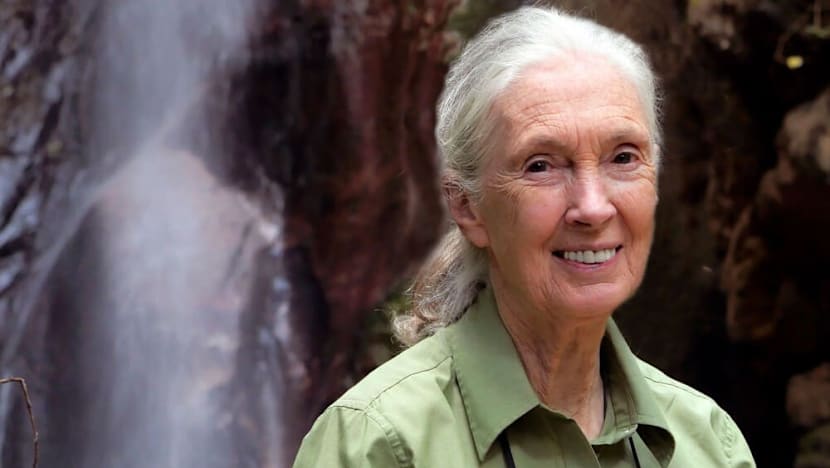
CHICKENS TO CHIMPANZEES
Born in London in 1934, Goodall was fascinated with animals from a young age - an interest her mother encouraged.
She immersed herself in books about wild animals, and one of her favourite toys as a child was a stuffed chimpanzee named Jubilee.
Her interest prompted her to attempt her own “research” at a young age. Once, Jane’s mother found her in bed with a handful of earthworms, trying to understand how they could move without legs.
On another occasion, she gave her mother a scare after she disappeared for hours, hiding in the family's henhouse to watch a chicken lay an egg.
At 23, after several years as a waitress and secretary, her opportunity came when she visited a friend's family farm in Kenya.
She met paleoanthropologist Dr Louis Leakey, who invited her to join him in his research into chimpanzees in Tanzania.

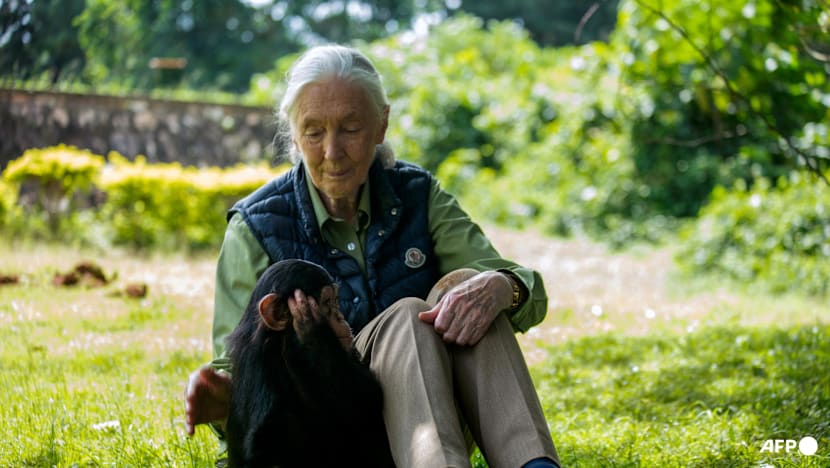
UNORTHODOX RESEARCH METHODS
Goodall arrived in what is now Gombe National Park in 1960 and adopted an unorthodox approach to observing the chimpanzees, immersing herself in their habitat and attempting to gain their trust.
She also defied scientific convention by giving the primates names instead of numbers - a decision criticised by some scientists.
One of her most groundbreaking discoveries, for instance, involved a chimpanzee she named David Greybeard. She saw it using grass stems to make tools for fishing termites from their nest. Before that, mainstream scientists believed humans were the only species to make and use tools.

Her research also documented how chimpanzees have distinct personalities, minds and emotions, and how they form lasting and complex relationships - leading to scientific understanding of the primates today.
Her discoveries were circulated to millions when she first appeared on the cover of National Geographic in 1963 and then in a popular documentary.
A collection of photos of Goodall in the field helped her and even some of the chimps become famous.
One iconic image showed her crouching across from the infant chimpanzee named Flint. Each has arms outstretched, reaching for the other.
″What the chimps have taught me over the years is they’re so like us. They’ve blurred the line between humans and animals,″ Goodall said in 1997.
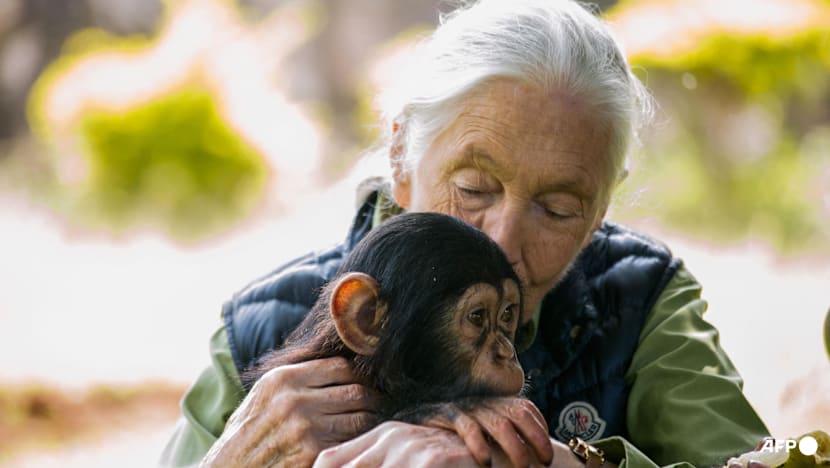
THE TRAILBLAZER
In 1965, Goodall established the Gombe Stream Research Center, which became a training ground for students interested in studying primates and ecology, among other things.
The centre attracted many women, who were nearly absent from the field when Goodall began her work.
''Jane Goodall's trailblazing path for other women primatologists is arguably her greatest legacy," Gilbert Grosvenor, chairman of The National Geographic Society, said previously.
In 1977, the primatologist set up the Jane Goodall Institute, which became a global leader in the effort to protect chimpanzees and their habitats through community-led conservation.
The Humane World for Animals said on Wednesday that Goodall’s influence on the animal protection community was immeasurable.
“Her work on behalf of primates and all animals will never be forgotten,” said Kitty Block, president and CEO of the group formerly the Humane Society of the United States and Humane Society International.
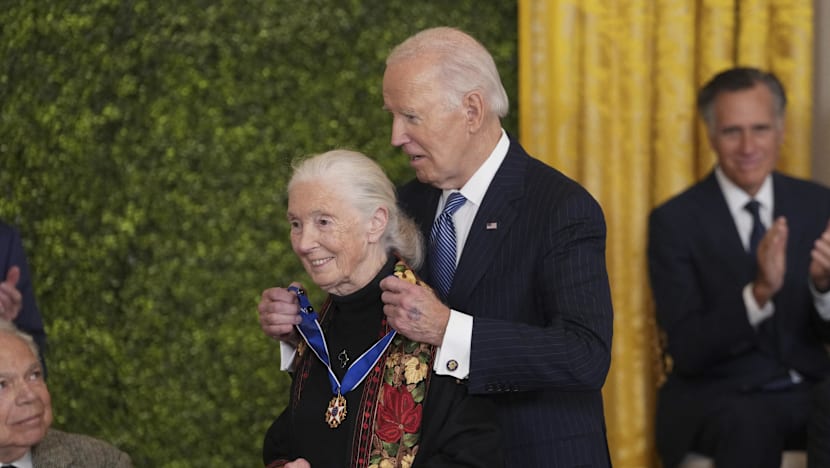
"REACH THE HEART" ADVOCACY
Goodall’s work moved into global advocacy after she watched a disturbing film of experiments on laboratory animals in 1986.
″I knew I had to do something,″ she said. ″It was payback time.″
When the COVID-19 pandemic hit in 2020 and halted her in-person events, she began podcasting from her childhood home in England.
Through dozens of “Jane Goodall Hopecast” episodes, she talked with guests including US Senator Cory Booker, author Margaret Atwood and marine biologist Ayana Elizabeth Johnson.
“If one wants to reach people; If one wants to change attitudes, you have to reach the heart,” she said during her first episode. “You can reach the heart by telling stories, not by arguing with people’s intellects.”
In later years, she pushed back on “gloom and doom” messaging and aggressive tactics by climate activists, saying they could backfire.
Her advice: “Focus on the present and make choices today whose impact will build over time.”
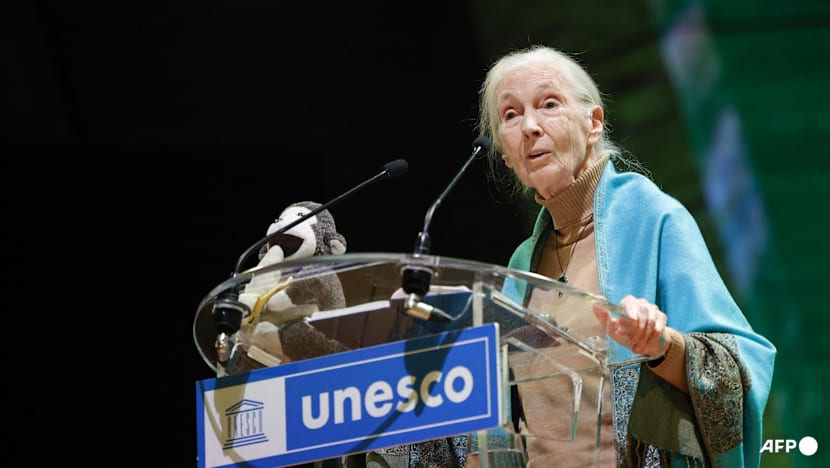
CONSTANTLY ON THE MOVE
According to the Jane Goodall Institute Singapore, she travelled more than 300 days a year, speaking to audiences around the world about threats to chimpanzees and their habitat, as well as other environmental crises.
Her engagements ranged from speaking to students and television interviews to discussing conservation issues with government officials and meeting with donors to raise money for the institute.
She was in Singapore in December last year, when she spoke on marine conservation at the launch of the country's most extensive coral restoration effort.
Between more serious messages, Goodall's speeches often featured her whooping like a chimpanzee or lamenting that Tarzan chose the wrong Jane.
She had been scheduled to meet with students and teachers on Wednesday to launch the planting of 5,000 trees around wildfire burn zones in the Los Angeles area.
The organisers learned of her death as the event was to begin, and the first tree was planted in her name after a moment of silence.
In his tribute to her, nature broadcaster Chris Packham reflected on Goodall’s relentless advocacy until the very end.
“In many ways, Jane just died on the job,” he said. “The job that her life became. And that was protecting life on earth.”








